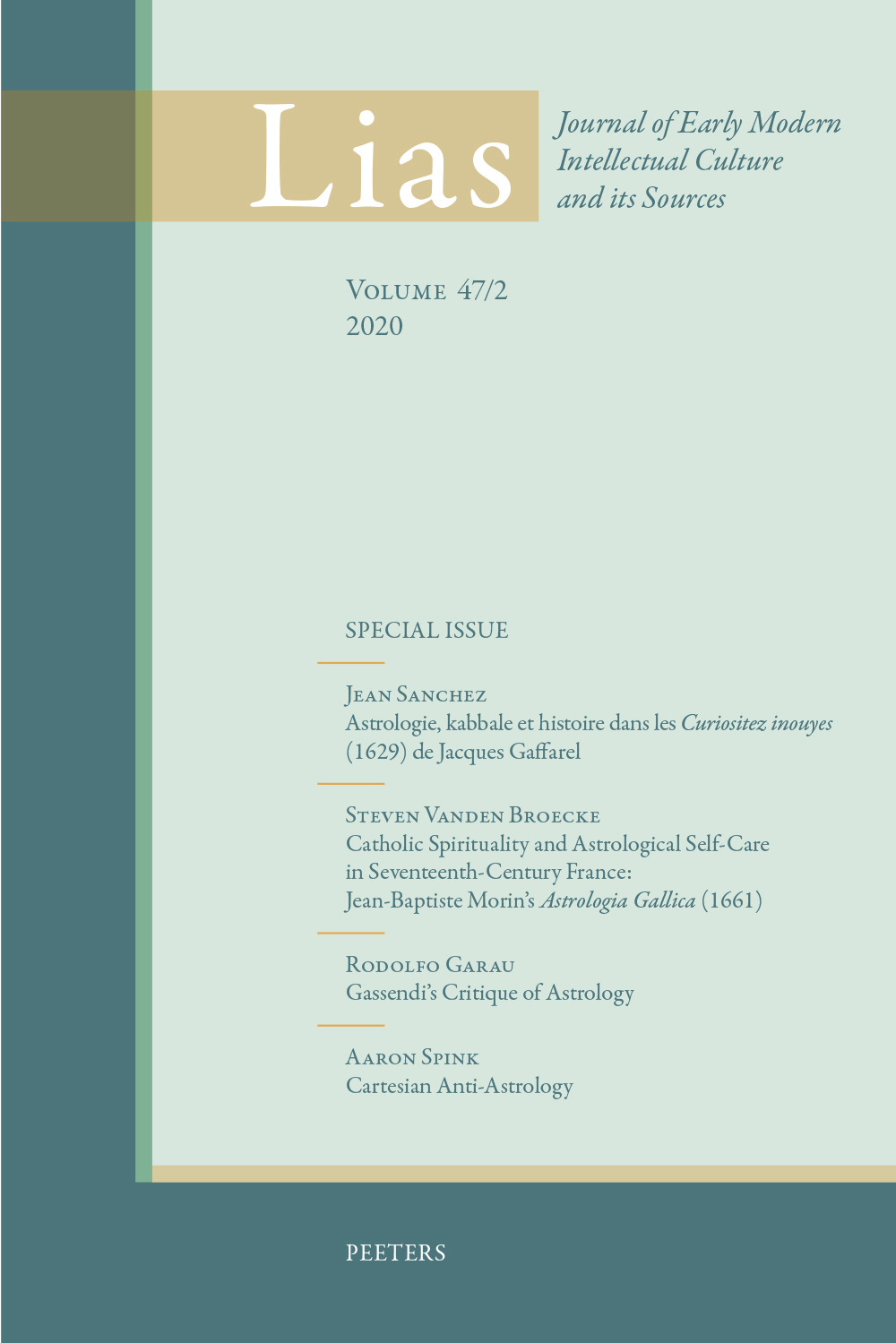 previous article in this issue previous article in this issue | next article in this issue  |

|
Document Details : Title: Mathematics and Panegyric Subtitle: The Problema Austriacum by Albert Curtz Author(s): BRÜSER, Clemens Journal: Lias Volume: 48 Issue: 1 Date: 2021 Pages: 35-61 DOI: 10.2143/LIAS.48.1.3290520 Abstract : This article will present an example of a neo-Latin text that constitutes a rare example of the use of scientific literature as panegyric, the Problema Austriacum by Albert Curtz (1600-1671), published in 1653, a mathematical treatise presenting a construction for a regular 7-gon and a regular 14-gon using only Euclidean geometry and conic sections. There have been many attempts at solving the same problem, many of them correct. The Problema Austriacum, however, is unique in that it uses the construction to mirror a real-life event, the coronation of Ferdinand IV (1633-1654) as the fourteenth Roman king from the Habsburg dynasty. Therefore, Curtz lets mathematics become panegyric. This article will feature a short synopsis of Curtz’s life and works and a contextualisation of the Problema Austriacum in particular. Then, Curtz’s treatise will be analysed regarding the links between panegyrical and mathematical intent. The analysis will focus on four main aspects: firstly, the frontispiece and the dedication to Ferdinand IV; secondly, the preliminary note, presenting the problem and the methods used to solve it; thirdly, the construction and its proof; and fourthly, the treatise’s appendix. It will be shown that Curtz restricts himself to the mathematical essentials in order to highlight his panegyrical ambitions. At the same time, it will be argued that the mathematical content is not irrelevant or entirely subordinate to the panegyrical. The article will also highlight how Curtz relied on contemporary sources for both mathematics and panegyric. |
|
